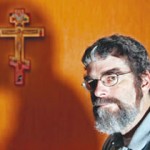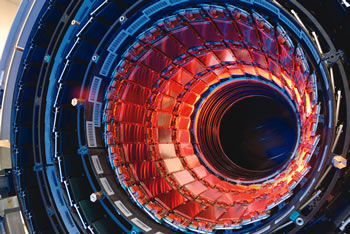Tiny Particle of the Creator

Brother Guy Consolmagno
Vatican Astronomer Guy Consolmagno SJ has commented on the dramatic advance in the study of subatomic particles announced by CERN (the European Nuclear Research Agency). as “the heaviest boson ever found” , dubbed by the media “the God particle”.
The Higgs Boson is the last missing piece in the zoo of subatomic particles predicted by the ‘Standard Model’ of how subatomic particles work, a theory that for forty years has guided our understanding of how matter is put together.
It’s the bit that would account for the way the particles which incorporate it appear to have mass. It is named after its proposer, Professor Peter Higgs, and is an example of a type of subatomic particle called a ‘boson’ named after Satyendra Nath Bose, who worked out the mathematics of how such particles behave.
As for the ‘God particle’ label, the particle itself has nothing to do with God, or at least nothing more than any other particle of creation does, since every particle in its own way, demonstrates the beauty and subtlety (and indeed at times the sense of humour) of the Creator.
From the beginning it was meant only as a metaphor, a way to describe the importance of this particle which if discovered would cap the Standard Model; a particle which in its elegance, might reflect the elegance of God; and a particle whose existence like that of God, its believers have to take only on faith.
a particle which in its elegance, might reflect the elegance of God;
Scientists do, indeed, speak in metaphors.We have to. Even the word ‘particle’ is a misnomer. A boson is nothing at all like a tiny speck of fluff that you could see in a microscope. It is an entity that can only be described in terms of the mathematics that it appears to follow, and even the maths are a metaphor for the reality they are trying to describe. People who look for ‘literal’ truth in the Bible, would be well advised to remember that materialistic science itself is not meant to be taken ‘literally’. You cannot do justice to any deep truth, be it love or beauty or subatomic particles or God, with mere human language. You can only invoke a meaning through images that, if well chosen, might shadow the shape of reality in your mind.
Why is it that journalists and non-scientists latch on to a nickname like the “God particle”? Why do so many people desperately seek to find a religious vindication in the latest incomprehensible advances in science, from the Higgs boson to dark energy to Big Bang?

Hadron collider
I worry that some people may be expecting science to deliver more than it can promise. But this kind of mind-stretching science does have a role to play in our religious understanding.
Catholic thinkers from Augustine to Aquinas to John Paul II have been at pains to remind us that there are not two kinds of truth, one for science and one for religion. But there are two kinds of questions. One sort are those that have simple and often quantifiable answers: how many, how big, what happens first, what happens next? Science answers this kind of question. Once these questions are solved, we put them aside and go on to the next set of questions.
The second kind of questions, though, are those that we continue to ponder all our lives, even when we already have answers for them; questions about meaning, beauty and love.. Rather than answering them, science can provoke us to ask such questions, illuminating them in new light. When it does that, science enriches our theology and philosophy without pretending to replace it.
The Higgs boson, if indeed it is discovered, reminds us that reality exists in ways that matter, on a scale and in a manner that we can partially grasp with our mathematics, but which ultimately goes beyond our power of imagination. It’s a beautiful piece of science, an illustration of how we humans can progress in our understanding of these unimaginable realms of reality. And it is not over yet.
Reprinted and abridged with permission of first publishers THE TABLET 14 JULY 2012 (www.thetablet.co.uk)
 Entries(RSS)
Entries(RSS)